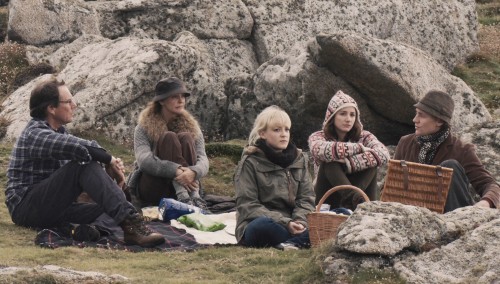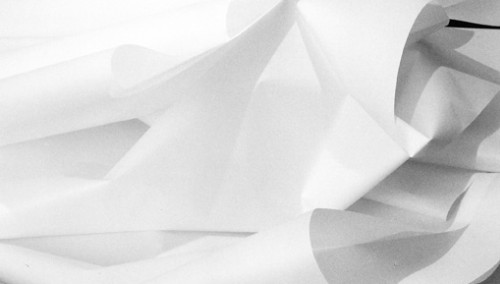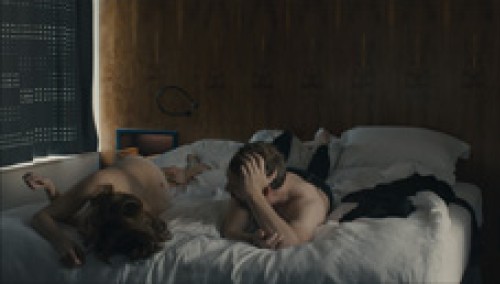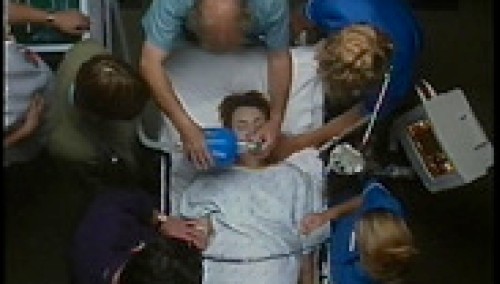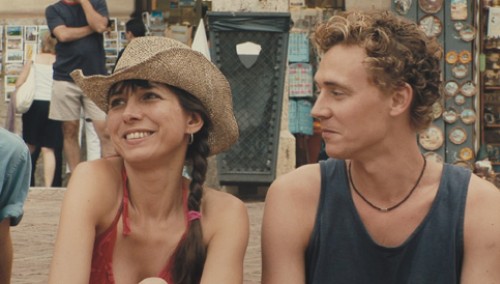Biography
Born in London in 1960, Joanna Hogg resides and works in the United Kingdom’s capital. She studied at the National Film & Television School in Buckinghamshire, where her graduation film, Caprice (1986), starred “Matilda” (a.k.a. Tilda) Swinton in a very early screen appearance for the future Oscar-winner. Hogg also worked in photography, experimental film and music video, and her television work in the 1990s included episodes of the popular series London’s Burning, Casualty and London Bridge, plus the stand-alone EastEnders special Dot’s Story (2003). In 2007, her debut feature Unrelated (2007), set in Tuscany and featuring Tom Hiddleston in his big-screen debut, premiered at the London Film Festival, winning the international critics' FIPRESCI award. Her 2010 follow-up Archipelago, set on the Scilly Isles off the Cornish coast, received three nominations - Best Film, Best Screenplay and Best Actor (Hiddleston) – at the Evening Standard British Film Awards. In 2013, her third film Exhibition (2013) competed for the Golden Leopard at Locarno, and her work was showcased in the Emerging Artist sidebar of the 51st New York Film Festival.
Filmography (Selection)
Paper (1980, short; CE '14), Home (1980, short; CE '14), Paris (1984, short; CE '14), Caprice (1986, short; CE '14), Flesh & Blood (1988, TV series; CE '14), Dancehouse 8 (TV series, 1992; CE '14), Vicious Circl e (1993, TV movie), Staying Alive (Episode #4, 1996; CE '14), London Bridge (1996, TV series, episodes #1.13, #1.14, #1.15, #1.21, #1.22, #1.24), Casualty “Love’s Labour” (1997, TV series), Casualty: Love’s Labour (1998, TV series; CE '14), London’s Burning (1999, TV Series; CE '14), Reach for the Moon (2000, TV miniseries), EastEnders: Dot’s Story (2003, TV movie), Unrelated (2007; CE '08), Archipelago (2010; CE '11), Exhibition (2013; CE '14)
Essay
The Geometry of unease
(Neil Young)
“All of a sudden, British film has a new master” wrote Nick Roddick of the London Evening Standard in September 2008, noting the release of writer-director Joanna Hogg’s debut feature Unrelated to near-universal acclaim.
“Even [mass-market tabloid] ‘The Sun’, not known for praising art-house films, raved about it. And yet the shock is not the praise – as a feature debut, it's staggeringly accomplished, more like the work of a European art-house director than anything homegrown.
"More than half a decade later, Joanna Hogg now has three features to her name and has quietly but firmly established as a top-drawer presence in both British and European cinema. Her films are acute studies of characters in situations of low-key, often domestic or quasi-domestic extremis, often revealing how that legendary English “reserve” can bottle up volatile, often destructive passions.
Hogg’s is in many ways an unusual career – she was 47 when Unrelated was completed – one which touches upon several disparate strands of British cultural life of the Thatcher and post-Thatcher era: from the esoteric experimenta of Derek Jarman to the most mainstream, audience-beloved examples of small-screen fare, the BBC's EastEnders and ITV’s London’s Burning.
Her vision is mature and nuanced, exquisite in its calibrated precision but frequently leavened by an unexpected streak of humour – often expressed in the form of awkward social embarrassment. Her casts alchemically combine professional performers such as Tom Hiddleston – an unknown at the time of Unrelated but now a major international star – with individuals plucked from other walks of life, resulting in the flawless ensembles that have quickly become a trademark.
Interview
(The interview was conducted by Neil Young)
You went from experimental shorts to television work before features – an unusual progression ...
I lost confidence in my own ideas at film school and after I graduated I developed the notion that I needed to get more directing experience before making my own films. That I should prove myself working with actors and also prove I could make “serious” work, having felt criticised for making Caprice which was seen as somewhat frivolous by my tutors. No one leveled that criticism directly at me, but I guessed – from their reluctance to acknowledge my graduation film – this was what they thought. So maybe my career took a wrong turn because of a misunderstanding or an overripe imagination ... Dangerous to rely on conjecture for career advice. No regrets but I do find myself feeling angry, mostly towards myself, for not having the courage of my convictions earlier than I did.
And in terms of the feature films?
The early more experimental work, and my photography, connect much more to the work I’m doing now. It sometimes feels – especially looking through my prefilm school work in preparation for this retrospective – as if the TV work had never happened in the middle. It was a diversion but I realise more and more what the television experience gave me: it taught me how to work with actors, to shoot fast when I need to, edit on time and on budget. I have these skills in my pocket when I’m working now and only recently have started to appreciate this.
Derek Jarman is often cited as a key influence on your early career ...
Jarman was an important influence on me from 1979 to 1981. Jubilee made a big impression on me. I saw it with an audience of punks spitting and throwing things at the screen. It was truly interactive cinema. I then sought out his other films and that led me to his Super 8 work, which particularly struck me, maybe because this way of making films seemed more accessible to me. When I eventually met Derek in 1980 he was already preparing Caravaggio. I think his generous, creative spirit was a source of inspiration for a lot of filmmakers of my generation. He was unique at that time, making films in such a free way, oblivious to commercial pressures yet he reached a relatively wide audience. He truly created his own world. I wish it had rubbed off on me more.
Unrelated and Archipelago seem to make a natural “pair”, whereas Exhibition feels like a step in a different direction.
When I conceived Unrelated I didn’t think beyond it to any other films, but after finishing it I was still attached to ideas of family and family gatherings and wanted to continue with those themes in Archipelago. I hate saying goodbye to my films. Hanging onto elements from the previous film is one way to make this transition easier. After Archipelago I thought I would go back and see what the relationship between Anna and Alex (from Unrelated) might be like back home in London. I had finished Archipelago feeling I should have developed Edward’s sexuality, so then this gets pushed into the next film. It’s like finishing a painting and there’s still some unused paint on the palette. A lot of time passes between the films and my ideas are changing and adapting and responding to new situations. I never look back at my work so I don’t know how they look in relationship to each other.
In both Archipelago and Exhibition you use non-professional actors.
Casting is where I get my kicks. The high is taking a risk – or you could say trusting my instinct, and not knowing exactly how it will work out, but feeling excited about bringing someone new to the cinema screen. At the same time I like working with certain actors again and again and pushing them – Tom [Hiddleston] is obviously an example of this – into new areas. He has the ability to be a blank canvas and morph himself into different people. That can be as exciting as someone completely new to the screen.
What are the differences between working with such non-professionals and working with professional actors?
If I’m making the decision to cast non-actors it’s because of who they are, and not because I want them to skilfully transform themselves into someone else – a crucial difference. I may have written D in a certain way but then I look at Viv and realise I’m going to have to take on board the differences between what I’ve written and what is now in front of me. I have to do some letting go here and this isn’t always easy, but the pay-off is I’m going to be portraying someone real; a flesh and blood “performance” that doesn’t feel like a performance. And it’ll be one that hasn’t been seen before. This is what I find boring about casting well-known actors – they have been seen in a myriad of ways before and I won’t be surprised. Non-actors generally ask fewer questions. They can be more willing to be led and take each moment as it comes. But also I think the best actors can do this too – if they’re willing to let go. This is the hardest thing. Increasingly I’m finding a reluctance to distinguish between actors and non-actors and really it is simply a question of finding the right person for the role and less about whether they’re trained and experienced or not.
Each of your films engages very intimately with space and environment. What comes first, the space, the narrative or the characters?
My personal relationship to the space is key. This is one of the springboards for my imagination. My feelings surrounding a place become the foundations of the story. With Archipelago this was most acute, because of knowing the island [Tresco] so well since I was a small child. With Unrelated and Exhibition, these were relatively recent relationships, which nevertheless had left their imprint on me. Only when I have decided on the setting can I embark on developing the story. The house in Exhibition is very much a third character. I wanted the story to take place in this modernist house because modernism is the perfect arena for encounter and emotion. It’s also uncluttered and clear and has a theatricality about it. The pink sliding doors of D’s study function like curtains in a theatre, with her study acting as the stage. The core of what I was exploring was how one creates one’s own private space within a couple, and within a house that is very hard to have secrets in.
How did you discover the work of architect James Melvin, whose house we see so extensively in Exhibition?
My husband Nick and I first met the house in the early 1990s when a friend introduced us to James Melvin and his wife Elsa. We immediately hit it off – despite the age gap – and kept in touch over the years, visiting the house often. They always struck us as a perfect couple, happy and still curious about the world. Melvin had built the house for himself and Elsa in 1969 after their children had grown up. It was one of only a few private dwellings he designed. In his architectural practice Melvin Gollins Ward designed mostly designed commercial buildings, including the central campus for the University of Sheffield and the British Airways terminal at JFK Airport.
The soundscape of Exhibition is a particularly striking element.
Bresson’s dictum “the ear is more creative than the eye” is always ringing in my ears and I believe this wholeheartedly. One of the many aspects that struck me about this house was the way sounds from the street penetrated the space inside, and sometimes it was as if a sound, like a car door shutting or a voice in the street, would appear to be coming from inside. This inside outside aspect informed the soundscape. I wanted D to imagine entire stories in her head through sound and to create the idea of a frightening world outside.
Jovan Ajder has worked on your three features ...
Jovan and I have a very good creative working relationship. We have built up a way of working together and we trust each other, which means we can push ideas much further. We spent about three weeks at the final mix stage. It's hard to describe the exact process but we’d go over and over particular scenes to get exactly the right sounds, layering them and creating new rhythms out of everyday noises and in the end it was like making music. We were scoring the film and you can’t do this in a few days. I love recording sounds on my Zoom H2 and taking these recordings into the studio where we’d incorporate them into the tapestry. It’s an obsessive part of the process and possibly my favourite part.
What’s your view of the current landscape in terms of the artistic or adventurous cinema in the UK?
It’s clear there are now younger generations of filmmakers who haven’t been exposed to much cinema history. There are fewer places to see the work of say Tarkovsky or Fellini in cinemas compared to say the early eighties. In the art world you’d never come across a young artist who hasn’t studied, say, the Italian Renaissance painters or Gainsborough or Braque, but in cinema it is clearly quite different – and possibly worrying.
And in terms of finance? Your own films are independently funded.
This is hard to answer. I now get support from the BFI (British Film Institute) and BBC Films and they have surprised me with their complete and utter support of my vision. This has been a revelation to me as previously I had been suspicious of broadcasters and governing bodies – partly because of my experience working in television and the tendency to lose control of one’s work. Now this is very different for me and I recognise it takes time for trust to build up. But after three films they can see I am serious and hopefully worth supporting. Doesn’t mean it will be easy from now on but at least I have somewhere to go with my ideas and there is a strong chance those projects will be made.


